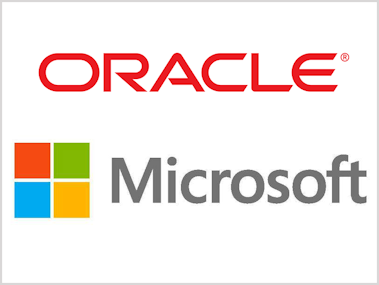On June 5th, Microsoft and Oracle announced a partnership that bridges the gap between Microsoft Azure and Oracle Cloud Infrastructure (OCI). This is the first time two competing cloud giants have partnered, which supports the trend that large organizations are demanding hybrid multi-cloud options for their business operations.
While a startup company or smaller concern that has no desire to manage its own physical infrastructure might decide to stick with one cloud and keep things simple, larger companies with significant on-premise infrastructure and multiple technology/platform investments from multiple vendors want to insure they aren’t limited in their options or locked down to one vendor for their cloud needs. To achieve those goals, larger companies want hybrid multi-cloud options to allow leveraging the best technology from whatever vendor is providing it while at the same time interconnecting that technology across multiple clouds and mixing in on-premises options.
As a company with Oracle and/or Microsoft technology, here’s what the integration means for you:
- Companies of any size will be able to use either Microsoft’s Azure cloud or Oracle’s cloud and potentially have applications on one cloud access data in the other seamlessly with integrated identity management.
- Companies can leverage the best technology for their needs and not be forced to commit to one vendor or the other. For example – Oracle’s newest release of the Autonomous Database is only available in the Oracle cloud initially (not even on-premises for at least the first several months), but with this partnership you could build an Azure based application that accesses Oracle’s newest Autonomous database running in Oracle’s cloud.
- Large enterprises have historically been burned in the past by cloud vendors, starting with open systems back in the RISC/Unix revolution. Now they have a chance for a variety of infrastructure suppliers and a consistent software stack across it with integrated identity management.
- Large enterprises that are thinking about moving into the cloud don’t want to be tied to a single vendor as it constitutes a vendor tiedown risk. This integration gives large companies the ability to seamlessly use multiple cloud vendors interchangeably.
- Looking forward, new technologies can’t just work on one cloud. They have to work on all of the clouds and it also needs to work on premise. That ability to do hybrid multi-cloud configuration is a big differentiator, and something we’ll be seeing a lot more of in the future.
To get more information on what to expect with this cloud integration, read the recent article published by Forbes. For more in depth answers to any questions you may have, fill out the form to talk with one of our expert DBA’s.
Source: Morgan, Timothy P. “COCKROACHDB WANTS TO TAKE A BITE OUT OF ORACLE.” NextPlatform, 3 June 2019, www.nextplatform.com/2019/06/03/cockroachdb-sharpens-mandibles-to-take-a-bite-out-of-oracle/.

